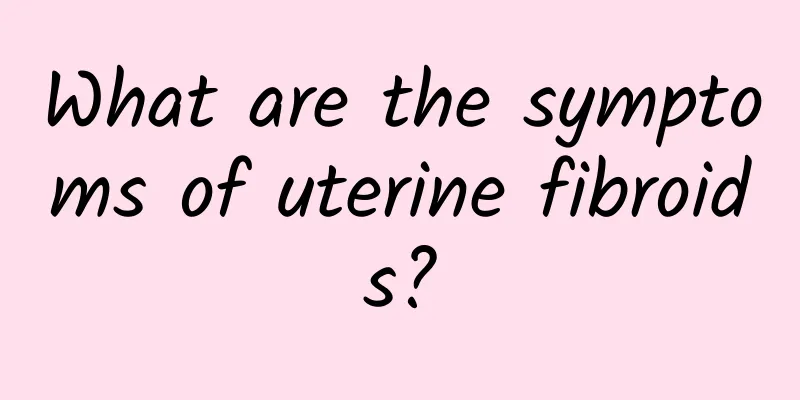What are the treatments for hyperprolactinemia?

|
Hyperprolactinemia is one of the common diseases in women. It generally does not endanger human life, but it may affect your pregnancy and childbearing. Therefore, as women, it is necessary for us to understand the harm that hyperprolactinemia brings to us. Once we are sick, we must go to the hospital for diagnosis and treatment in time. Don't be shy about seeing a doctor. Let's take a look at the expert's simple introduction to the treatment method. 1. Follow-up observation If the patient has no obvious symptoms, prolactin is not large (generally the uterus does not exceed 3 months of pregnancy), and there are no signs of malignancy, regular follow-up observation can be performed. 2. Medication (1) Gonadotropin-releasing hormone agonist (GnRH-a) Currently, the commonly used GnRH-a in clinical practice include leuprorelin (Enanton), goserelin (Zorelaide), triptorelin (Dapiga), etc. GnRH-a should not be used continuously for a long time. It is generally used for 3-6 months to avoid causing severe menopausal symptoms caused by low estrogen; a small dose of estrogen can also be supplemented at the same time to counteract this side effect. (2) Mifepristone is a progesterone antagonist that has been clinically tried in recent years to treat hyperprolactinemia. It can reduce the volume of prolactin, but after discontinuation of the drug, prolactin will grow again. (3) Danazol is used for preoperative medication or treatment of hyperprolactinemia in patients who are not suitable for surgery. Hyperprolactinemia may improve after drug withdrawal. Danazol can cause liver damage and androgen-induced side effects (weight gain, acne, low voice, etc.). (4) Tamoxifen can inhibit the growth of prolactin. However, long-term use may increase the hyperprolactinemia of some patients and even induce endometriosis and endometrial cancer, so this should be paid attention to. (5) Commonly used androgen drugs include methyltestosterone (methyltestosterone) and testosterone propionate (testosterone propionate), which can inhibit the growth of prolactin. The dosage should be used carefully to avoid virilization. During the bleeding period of patients with hyperprolactinemia, if the amount of bleeding is heavy, uterine contractants (such as oxytocin, ergot) and hemostatic drugs (such as tranexamic acid, aminobenzoic acid (hemostatic aromatic acid), levofloxacin, Panax notoginseng tablets, etc.) can also be used to play a certain degree of auxiliary hemostatic effect. 3. Surgery The surgical treatment of hyperprolactinemia includes prolactinectomy and hysterectomy, which can be performed through the abdomen or vagina, or endoscopic surgery (hysteroscopy or laparoscopy). The choice of surgical procedure and surgical approach depends on factors such as the patient's age, whether they have fertility requirements, the size and location of the prolactin, and medical technology conditions. (1) Prolactinectomy is a surgery to remove the uterus while preserving the uterus due to hyperprolactinemia. It is mainly used for young women under 40 years old who wish to retain their fertility. It is suitable for those with high prolactin, menorrhagia, compression symptoms, infertility caused by prolactin, submucosal prolactin, and those with fast-growing prolactin but without malignant transformation. (2) Hysterectomy: For patients with a uterus larger than 2.5 months of pregnancy, obvious symptoms, prolactin with the possibility of malignant transformation, and no fertility requirements, hysterectomy is appropriate. Hysterectomy can be performed with total hysterectomy or subtotal hysterectomy. For patients of advanced age, especially those with severe cervical hypertrophy, lacerations, or erosions, total hysterectomy is appropriate. The possibility of cervical malignancy must be excluded before surgery. 3. Uterine artery embolization Through radiological intervention, an arterial catheter is directly inserted into the uterine artery, and permanent embolic particles are injected to block the blood supply of hyperprolactinemia, so as to achieve prolactin atrophy or even disappearance. UAE is currently mainly suitable for symptomatic hyperprolactinemia such as anemia caused by abnormal uterine bleeding. When choosing interventional treatment for hyperprolactinemia, caution should be exercised, especially for those with uncontrolled pelvic inflammation, those who hope to retain their fertility, patients with arteriosclerosis, and patients with contraindications to angiography, which should be listed as contraindications to this treatment. As patients with hyperprolactinemia, we must be confident in ourselves, communicate with doctors in time, and don't be shy to let doctors fully understand your condition, which is conducive to the doctor's diagnosis and treatment. At the same time, we should also pay attention to regulating our diet, and proper exercise will also help us recover well. |
<<: What is the best treatment for hyperprolactinemia?
>>: Treatment of Hyperprolactinemia with Chinese and Western Medicine
Recommend
All-round sculpture! 8 towel stretching exercises once 0K
In fact, towel exercises have been popular for a ...
Is it normal to have menstruation 20 days after abortion?
It is normal to have menstruation 20 days after a...
Family planning is a good way to prevent cervicitis
The prevention of cervicitis has always been a to...
Which hospital should I go to for treatment of pelvic peritonitis?
Pelvic peritonitis is extremely harmful to female...
B-ultrasound examination method for diagnosis of female adnexitis
It is usually difficult to check whether patients...
What are the typical symptoms of uterine fibroids?
Uterine fibroids are the most common benign fibro...
What are the symptoms of inflammation after abortion?
Inflammation after abortion may manifest as abdom...
Handsome people are full of probiotics, ugly people are full of bacteria! 5 tips for taking probiotics
"Probiotics make handsome people, while bact...
Do not perform medical abortion without authorization
Medically speaking, when a woman is pregnant, it ...
What are the indirect causes of cervical hypertrophy?
At present, cervical hypertrophy is a type of gyn...
What are the necessary inspection items before painless abortion?
Women who have unexpected pregnancies will choose...
What to do if women in their forties have menstrual disorders
What should women in their forties do if they hav...
What are the categories of cervicitis
Cervicitis is a common disease among women, and t...
Longan honey annual output value of 1.2 billion yuan quality evaluation results released
The annual output value of Taiwan's longan ho...
Women who love sweets are more likely to suffer from candidal vaginitis
Vaginal candidiasis is a common female reproducti...









